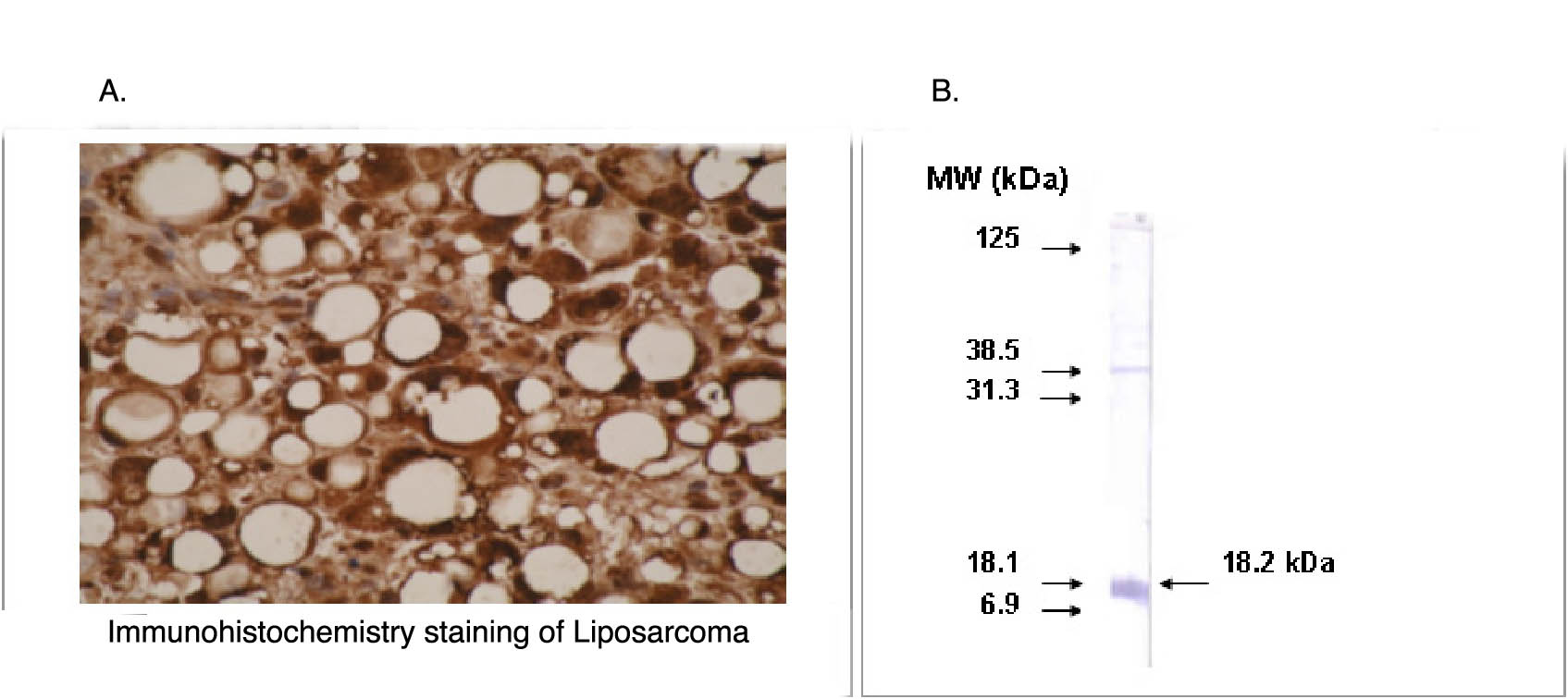Catalogue

Mouse anti Human Cytochrome p450 26A1
Catalog number: X2049M| Clone | F27 P6 A1 |
| Isotype | IgG2b |
| Product Type |
Monoclonal Antibody |
| Units | 200 µg |
| Host | Mouse |
| Species Reactivity |
Human |
| Application |
ELISA Immunohistochemistry Western Blotting |
Background
The cytochrome P450 proteins (CYPs) are monooxygenases that catalyze many reactions involved in drug metabolism and synthesis of cholesterol, steroids and other lipids. P450 enzymes are classified into subfamilies based on their sequence similarities. CYP26A1, also referred to as retinoic acid-4-hydroxylase, is a major retinoic acid catabolic enzyme. CYP26A1 plays an important role in protecting tailbud tissues from inappropriate exposure to retinoic acid. CYP26A1 transcription is epigenetically regulated by nuclear retinoic acid receptors 2. Mutations in the gene encoding for CYP26A1 are associated with caudal agenesis and spina bifida, imperforate anus, agenesis of the caudal portions of the digestive and urogenital tracts, and malformed lumbosacral skeletal elements. CYP26A1 is upregulated in adenomatous polyposis coli mouse adenomas, human FAP adenomas, human sporadic colon carcinomas, and in the intestine of adenomatous polyposis coli(mcr) mutant zebrafish embryos.
Synonyms: CYP450 26 (EC 1.14.-.-); Retinoic acid-metabolizing cytochrome; P450 retinoic acid-inactivating 1; P450RAI; hP450RAI; Retinoic acid 4-hydroxylase
Source
Immunogen: Hybridoma produced by the fusion of splenocytes from BALB/c mice immunized with a synthetic peptide derived from the C-terminus of the human CYP450 26A1 protein and mouse myeloma Ag8563 cells.
Product
Product Form: Unconjugated
Formulation: Provided as solution in phosphate buffered saline with 0.08% sodium azide
Purification Method: Protein A/G Chromatography
Concentration: See vial for concentration
Applications
Antibody can be used for Western blotting (1-2 µg/ml) and immunohistochemistry on formalin-fixed, paraffin-embedded tissues (1-5 µg/ml). Optimal concentration should be evaluated by serial dilutions.
Functional Analysis: Western Blotting
Positive Control: Liposarcoma cells
Storage
Product should be stored at -20°C. Aliquot to avoid freeze/thaw cycles
Product Stability: See expiration date on vial
Shipping Conditions: Ship at ambient temperature, freeze upon arrival
Caution
This product is intended FOR RESEARCH USE ONLY, and FOR TESTS IN VITRO, not for use in diagnostic or therapeutic procedures involving humans or animals. It may contain hazardous ingredients. Please refer to the Safety Data Sheets (SDS) for additional information and proper handling procedures. Dispose product remainders according to local regulations.This datasheet is as accurate as reasonably achievable, but Nordic-MUbio accepts no liability for any inaccuracies or omissions in this information.
References
1. Kumarakasingham, M., et al. (2005). Cytochrome p450 profile of colorectal cancer: Identification of markers of prognosis. Clin. Cancer Res. 11(10);3758-3765.
2. Sakai, Y., et al. (2004). CYP26A1 and CYP26C1 cooperate in degrading retinoic acid within the equatorial retina during later eye development. 276(1);143-157
3. Osanai, M. and Petkovich, M. (2005). Expression of the retinoic acid-metabolizing enzyme CYP26A1 limits programmed cell death. 67(5);1808-1817
Protein Reference(s)
Database Name: UniProt
Accession Number: O43174 (Human)
Species Accession: Human
Safety Datasheet(s) for this product:
| NM_Sodium Azide |

" A. Immunohistochemical staining of liposarcoma cells using CYP26A1 antibody (cat. no. X2049M). B. Western blot on recombinant protein corresponding to C-terminal region of CYP26A1 protein using CYP26A1 antibody."

